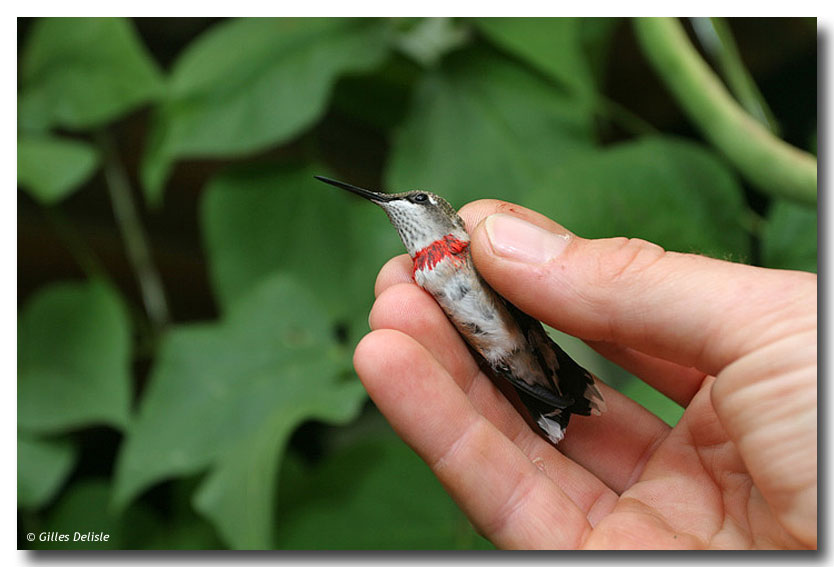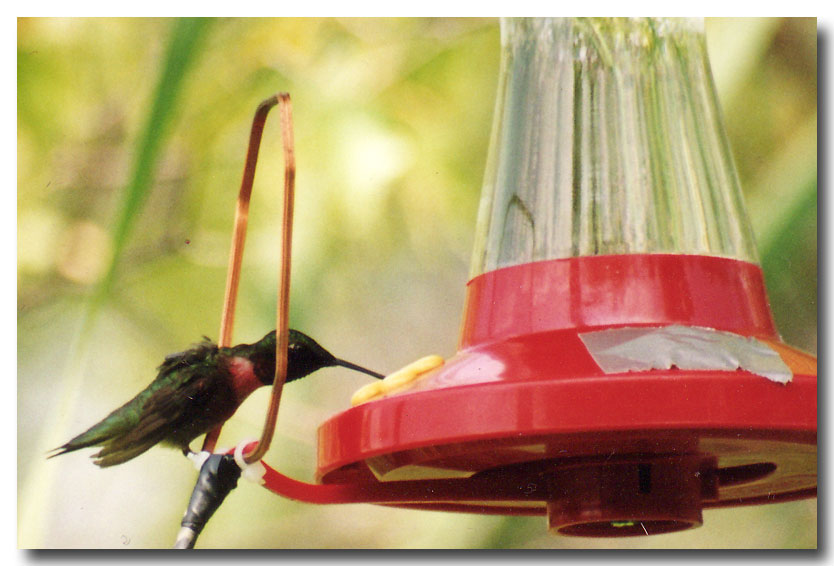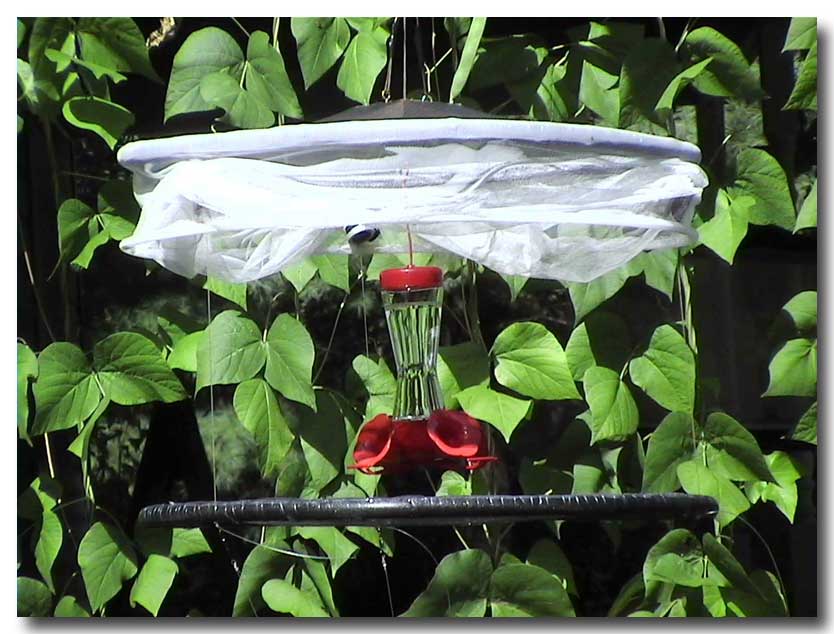 |
||||||||||||||||||||
|
What happened with our hummingbirds in 2006?
Habitat selection and feeder use by the Ruby-throated hummingbird In studying how an animal selects or uses its habitat, it’s important to be familiar with the various components of that habitat. In the case of our hummingbirds, we did a rigorous inventory of the plants and flowers on the 50 hectares of fields, brushland and forest that constitute our study zone. The trunk diameter of each tree and shrub species was noted, with their density and height, as well as the foliage density at various levels in the canopy. With regard to flowers, we did monthly inventories of all the flower species within the grid, noting their numbers and density. These data on the flora are vital to give us a better understanding of how the presence of flowers affects our hummingbirds’ feeder use. One thing we found which was interesting (but not surprising) is that there were very few flowers in the forest and many in the fields and brushland. Because fields and brushland receive direct light and the soil has been worked and turned over, exposing the hundreds of seeds buried in the top few centimetres, the diversity and quantity of flowers found in those environments is significantly greater than in mature maple and hemlock forests. After characterizing the habitat, we had to capture and mark our hummingbirds and install microchips on their backs. (These microchips are like glass-sealed versions of the bar codes found on all consumer products.) We installed microchips on 92 hummingbirds in 2006: 29 adult males, 19 juvenile males, 41 adult females and 3 juvenile females. A microchip reader was installed on each feeder. Movements and feeder use were evaluated by examining the time spent at the feeders and the frequency of feeder visits, over the whole grid. Habitat data were recorded, but habitat use can depend on other variables, such as temperature, which may vary even within a given habitat. To study this, we installed a thermocron in each of the habitats within the grid. A thermocron is a kind of thermometer, about the size of a quarter, which can be programmed to measure the temperature at specified intervals throughout the day. We were thus able to take hourly temperature measurements in each habitat for the full duration of the study, allowing us to include this variable in our habitat use models and better understand how temperature may affect movements and feeder use within the grid. Some interesting observations: temperature differs more widely in very open habitats like brushland and fields and is much more stable in mature forest habitats. The presence of trees thus reduces temperature variation.
The project is well under way, but there is a still a lot of work to do and many analyses to conduct before we will really know how hummingbirds use their habitat. More details and results will undoubtedly emerge in the coming months and years. Migration Another segment of the hummingbird research project looks at migration and movements on a large scale, covering the whole province and all of North America. In 2006, we captured 128 hummingbirds in Stoke, in the Estrie region, where hundreds of hummingbirds stop in the spring to restore the fat reserves required by the migration. The hummingbirds are captured, banded and marked with a patch of colour (orange, red, blue, green, purple or yellow). That way, when the birds are freed, hummingbird lovers across the province may spot them at their feeders. By compiling reported sightings of marked hummingbirds, we may be able to learn more about hummingbird migration corridors and the migration strategies employed by these fascinating birds. Banding the birds also allows us to look at recruitment into these populations, meaning the number of young of each sex added. And banding gives us insights into hummingbird migration phenology: in terms of sex and age, which individuals migrate first, etc.
In 2006, at our site, we captured and marked 66 adult males, 22 juvenile males, 37 adult females and 3 juvenile females, for a total of 128 birds. Thanks to observers’ participation, we received four reports of marked hummingbirds sighted outside their banding site. Three were reported in Estrie: one in Windsor (about 13 km from the capture site), one in Fleurimont (about 20 km) and one in Saint-Denis-de-Brompton (4 km). Finally, we had a report from Rawdon, about 130 km from Richmond as the crow flies. In total, for all of the hummingbird projects, 155 birds were banded and marked; 75 more were colour-marked but not banded because the bands had not yet arrived.  Juvenile male marked with an orange patch on the breast The projects will continue in 2007, and we hope to be able to mark even more birds, especially during the spring migration. We are counting on you to report sightings of marked hummingbirds and the date the first hummingbird arrives in your yard. You will find all the information you need right here on the site, under the various tabs. We look forward to receiving your sighting reports. Enjoy the migration! |

